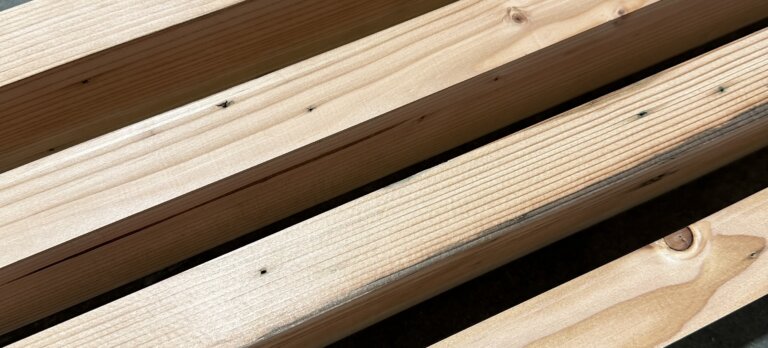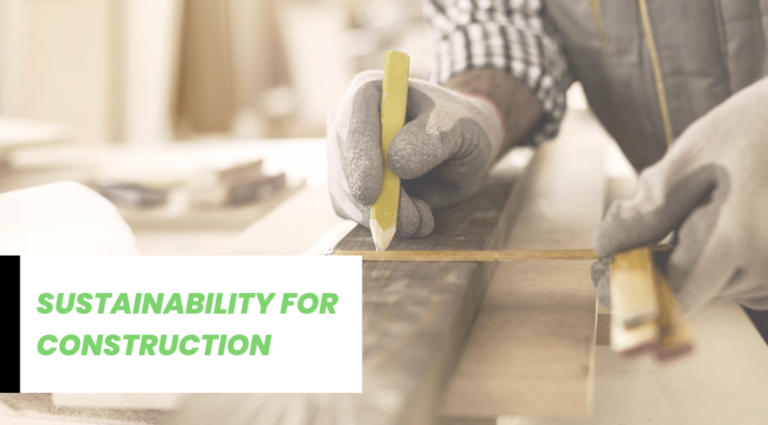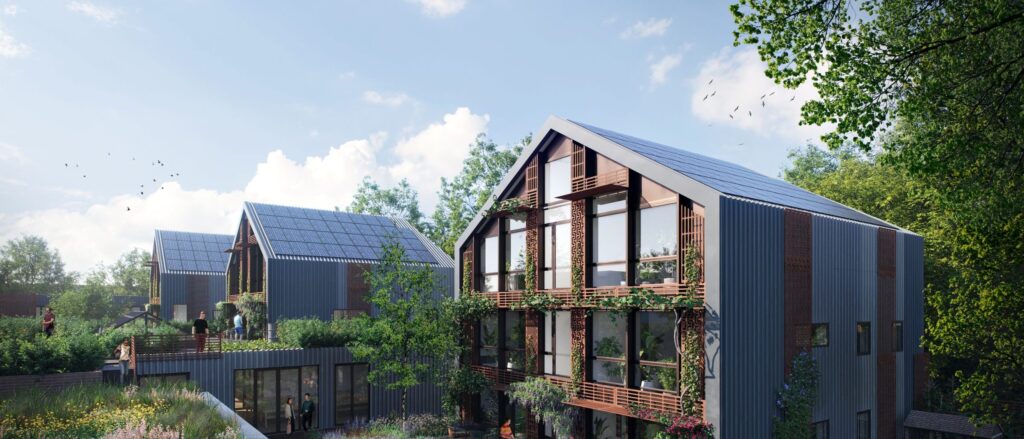
Did you know that 37 million tons of wood from construction and demolition go to landfills every year in the United States? And that hefty number is from wood alone. That’s disrespectful to future generations and our planet.
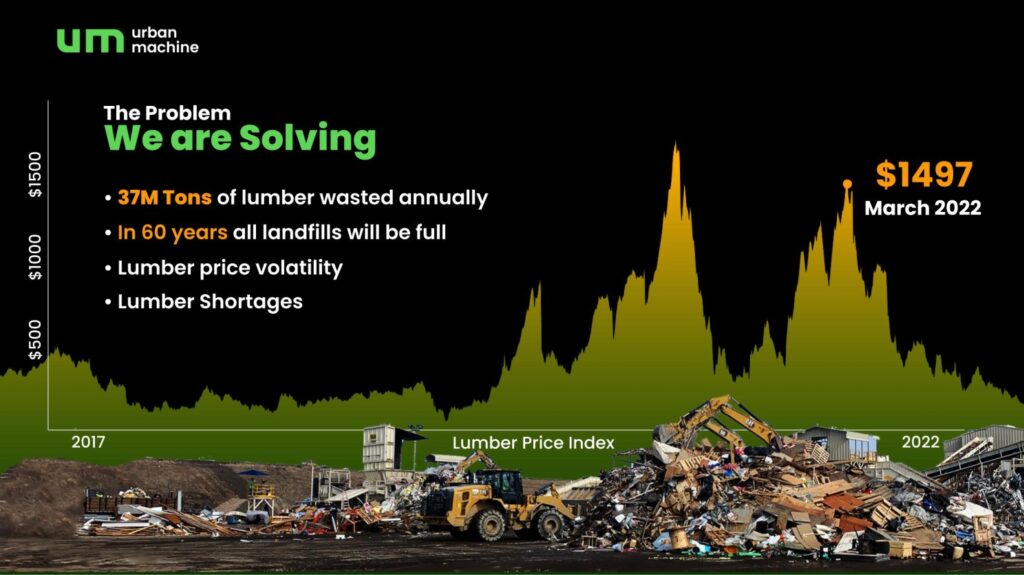
The global demand for resources may climb to 200% of today´s level or more by 2050 (UNEP and IRP, 2016; OECD, 2018), while timber demand may quadruple in the same period (Mitchell Investment Monitor, 2022). It will take a tremendous number of forests to run a biobased economy, putting more pressure on biodiversity loss and ultimately challenging the carrying capacity of our forestry reserves.
This notion of sustainable architecture requires consideration of a project’s overall design with respect to building materials, construction methods, and available resources. From the onset, the design must enforce sustainability for the building’s whole life cycle, ultimately including its DEconstruction. The focus of sustainable architecture is on designing to reduce the unnecessary impact on the environment while beautifully melding the project into its landscape. By implementing a circular economy into the design of products and buildings, sustainable architects transform waste into resources and create new industry networks with value. This dynamic opens new doors to understanding design, aesthetics, heritage, and new economic opportunities.
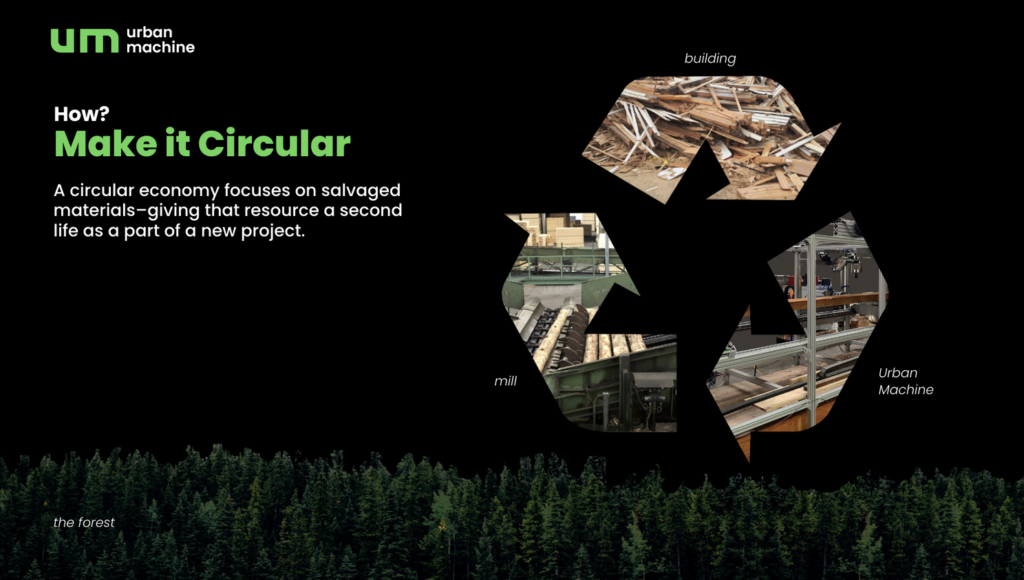
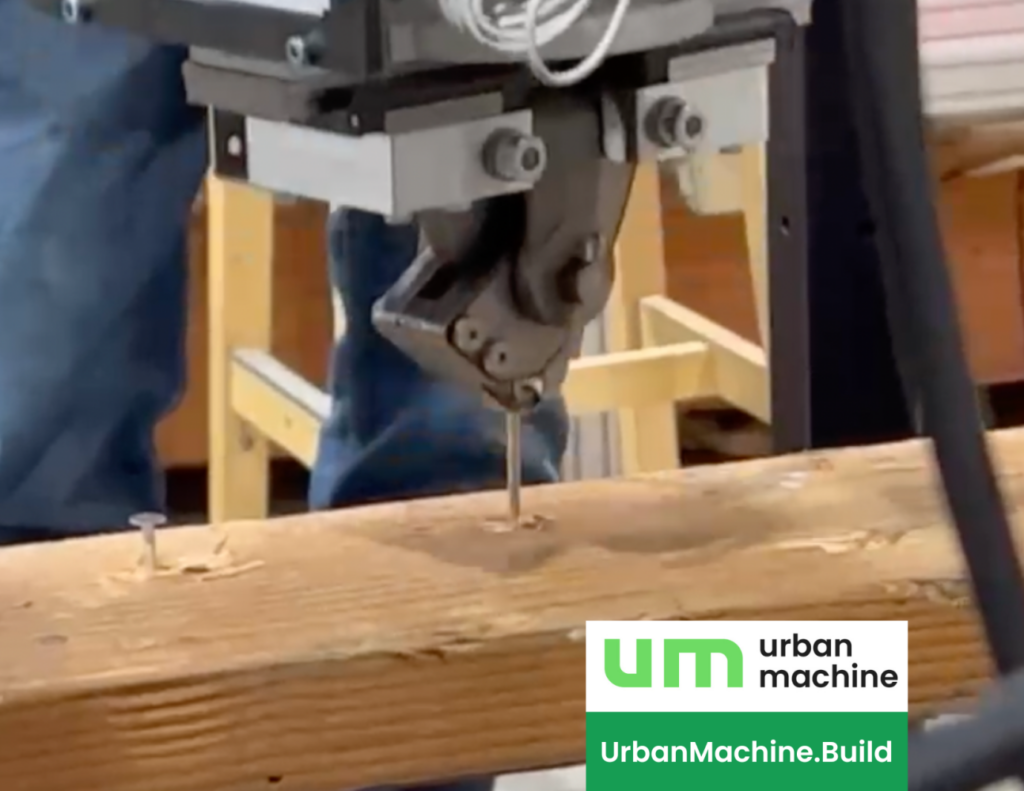
Technology is the game changer–modernizing the laborious process of reclaiming wood. AI is used by The Machine to remove bulk fasteners (nails, screws, and staples) and surface materials (like drywall) from reclaimed wood. Fasteners are pulled out of the wood with a powerful mechanism similar to that of a bird’s beak. Surface materials are removed using rotating wire brushes. Lastly, The Machine performs a final quality check to ensure the wood is ready for new construction. Urban Machine aims to reclaim 16,000 board feet of lumber per day; that’s like reclaiming one truckload of lumber each day. With the robot being mobile, it is both greener and more cost (and user) effective.
“Manufacturing lumber with the intent of only using it once—to be thrown in a landfill and released as methane—is an irresponsible practice,” explained Eric Law, Urban Machine CEO. “When we salvage wood, we optimize its value, longevity, and sustainability. Urban Machine reclaims what would have been worthless waste and gives it another life as a high-quality lumber product for architects to use in their designs.”
Sustainable architecture requires architects to think differently and create smart designs that use new technologies and enable sustainable supply chains. Sustainably-built structures reduce harmful effects on the ecosystem by minimizing energy consumption and efficiently using raw and reclaimed material resources.
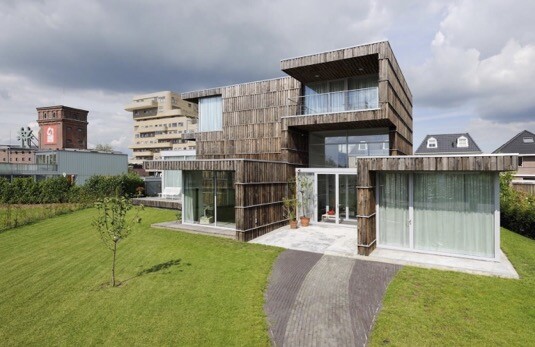
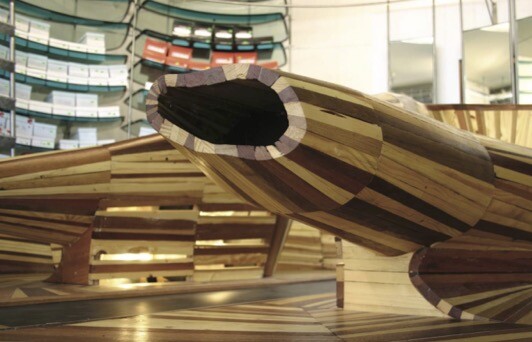
Superuse Studios has been designing with material circularity as a core mission for more than 25 years, applying up to 90% of reused materials in new buildings while designing for future disassembly. This cyclical use of resources can prolong the life cycle of materials for centuries rather than disposal into landfills. This also saves raw materials–curbing the demand for land use, timber farms, and the threat to biodiversity.
“There is no ugly material or component when there is good design.” -Jan Jongert, Superuse studios co-founder.
Sustainability teams now consider durability, waste reduction, and the long-term viability of materials for the entire project. By planning to use naturally renewable materials like wood, architects support a circular economy. And while wood is the “it” building material again, new studies indicate that it is impossible to increase wood production over a certain capacity. Therefore, reuse is a critical operation for new building construction. In short, wood itself is not the silver bullet for our environmental crisis, but how we use it (and reuse it) is an impactful strategy.
On the other hand, in 2018, the generation of wood in municipal solid waste (MSW) was 18.1 million tons, reaching 6.2% of the total MSW generation (EPA, 2022). The pressure to manage wood waste streams is a challenge that will increase as the demand for wood rises. The efforts to reduce wood waste and support wood demand require innovative waste-to-resource strategies.
In response, changemakers, architects, and developers are thinking differently about how the materials they build with are impacting our environment. One sustainable solution for construction? A shift to a circular approach for sourcing building materials, one with regenerative possibilities.
A circular economy for construction materials directly impacts sustainability by prolonging the lifespan of materials while reducing waste and the demand for raw materials to produce new goods. A circular economy’s objectives value the use of environmentally-conscious resources, waste reduction, and regenerative methods of production. To optimize resources, those embracing a circular economy will need to learn how to include salvaged materials as part of a new project as well as design buildings that will easily remove components for future reuse. “The way things have always been done” has proven to be waste-intensive; the construction industry has significant potential to operate as a circular economy and make a positive impact on our world.
